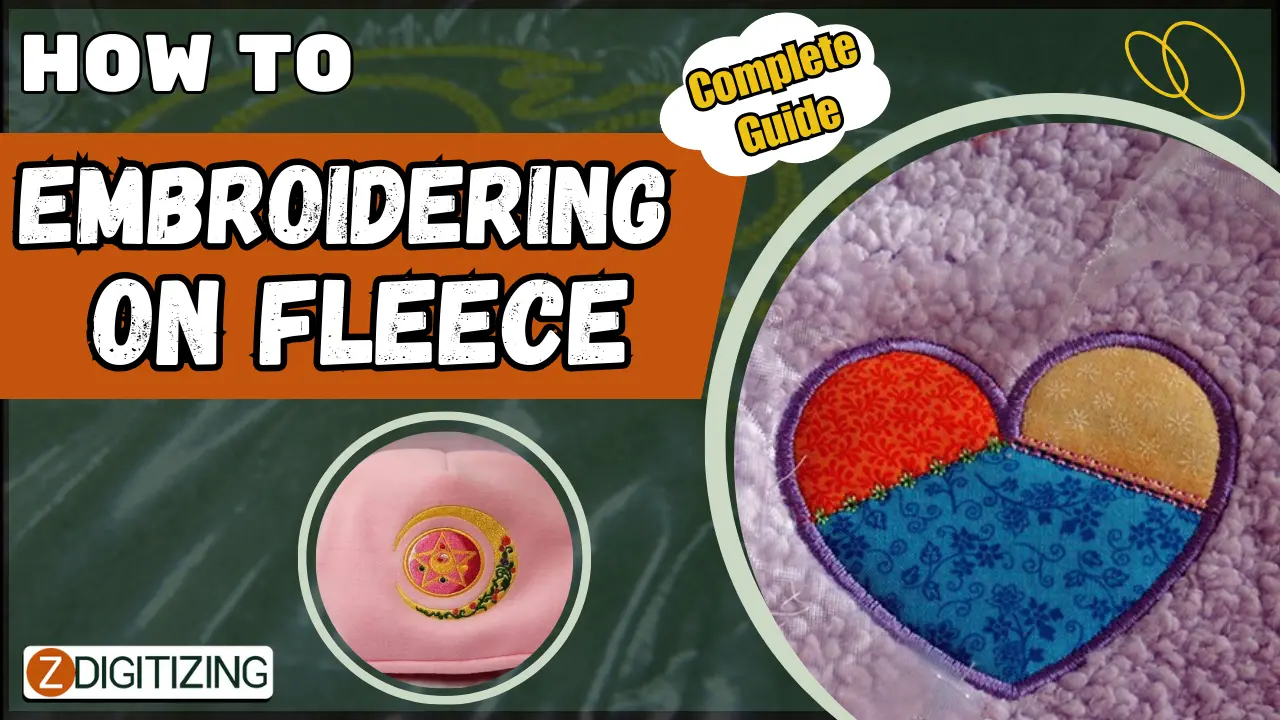Embroidering on fleece can be a rewarding and enjoyable craft, adding personal touches to garments, blankets, and other items. However, it requires careful attention to detail and the right techniques to achieve professional-looking results. In this comprehensive guide, we'll explore everything you need to know about embroidering on fleece, from understanding the fabric to converting designs to embroidery files.
Introduction to Embroidering on Fleece
Embroidery digitizing services play a crucial role in transforming digital designs into embroidery files that can be stitched onto fleece fabric. Whether you're a beginner or an experienced embroiderer, understanding the intricacies of fleece fabric and the digitizing process is essential for successful embroidery projects.
Understanding Fleece Fabric
Fleece is a soft, plush fabric known for its warmth and comfort. It is often used in making blankets, jackets, and other cold-weather apparel. When embroidering on fleece, it's important to consider its stretchiness and thickness, as these factors can affect the outcome of your embroidery.
Importance of Embroidery Digitizing Services
Embroidery digitizing services are invaluable for embroiderers, as they specialize in converting digital artwork into embroidery files compatible with embroidery machines. These services ensure that intricate designs are accurately translated into stitches, resulting in high-quality embroidery.
Preparing for Embroidery on Fleece
Before you start embroidering on fleece, it's essential to prepare properly. This involves selecting the right design, choosing the correct stabilizer, and mastering hooping techniques to ensure smooth stitching.
Choosing the Right Design
When selecting a design for embroidery on fleece, consider factors such as size, complexity, and compatibility with the fabric. Simple, bold designs tend to work best on fleece, as they are easier to embroider and stand out against the plush surface.
Selecting the Correct Stabilizer
Stabilizers are essential for supporting the fabric during the embroidery process and preventing distortion. For fleece fabric, tear-away or cut-away stabilizers are recommended, as they provide stability without leaving behind residue.
Hooping Techniques
Proper hooping is crucial for achieving precise embroidery on fleece. Make sure the fabric is taut and evenly stretched within the hoop to prevent puckering or shifting during stitching.
Setting Up Your Embroidery Machine
Once you've prepared your fabric and design, it's time to set up your embroidery machine. Ensure that the machine is properly threaded and that the bobbin tension is adjusted according to the fabric and design requirements.
Converting Designs to Embroidery Files
Before you can embroider your design on fleece, it needs to be converted into an embroidery file format compatible with your machine. Embroidery digitizing service can help with this process, ensuring that your design is optimized for stitching on fleece.
Testing Your Design
Before stitching your design onto the actual fleece fabric, it's advisable to test it on a scrap piece of fabric. This allows you to check the stitch quality, tension settings, and overall appearance of the design before committing to the final embroidery.
Embroidering on Fleece
Once you're satisfied with the test stitch-out, you can proceed to embroider your design onto the fleece fabric. Pay close attention to tension settings and stitching techniques to ensure smooth and even results.
Adjusting Tension Settings
Fleece fabric may require adjustments to your machine's tension settings to achieve optimal stitching. Experiment with different tension levels until you find the perfect balance between stitches that are neither too loose nor too tight.
Stitching Techniques
When embroidering on fleece, use slow and steady stitching techniques to prevent fabric distortion and ensure accurate placement of stitches. Pause frequently to check the progress of your embroidery and make any necessary adjustments.
Finishing Touches and Post-Embroidery Care
Once the embroidery is complete, carefully remove the fabric from the hoop and trim any excess stabilizer. Gently press the embroidered area with a warm iron to remove any wrinkles or puckering. Finally, follow the manufacturer's instructions for washing and caring for the embroidered fleece.
Troubleshooting Common Issues
Even with careful preparation, embroidery on fleece can sometimes encounter issues such as thread breakage, puckering, or design misalignment. Refer to troubleshooting guides provided by your embroidery machine manufacturer or seek advice from experienced embroiderers to address these issues effectively.
Benefits of Embroidering on Fleece
Embroidering on fleece offers numerous benefits, including the ability to customize and personalize garments and accessories, create unique gifts, and showcase your creativity. With the right techniques and tools, you can achieve professional-looking embroidery on fleece that is both durable and visually appealing.
Conclusion
Embroidering on fleece can be a satisfying and enjoyable craft, but it requires careful attention to detail and the right techniques to achieve excellent results. By understanding the properties of fleece fabric, utilizing embroidery digitizing services, and mastering essential embroidery techniques, you can create stunning embroidered designs that enhance the beauty and functionality of fleece garments and accessories.
Unique FAQs
- Can any design be embroidered on fleece?
- While most designs can be embroidered on fleece, it's essential to consider factors such as size, complexity, and fabric stretchiness. Simple, bold designs tend to work best on fleece.
- Do I need special needles for embroidering on fleece?
- Using a sharp, size 11 or 14 embroidery needle is recommended for embroidering on fleece. These needles can penetrate the fabric smoothly without causing damage.
- How do I prevent puckering when embroidering on fleece?
- Proper hooping, stabilizing, and tension adjustment are key to preventing puckering when embroidering on fleece. Experiment with different techniques to find what works best for your project.
- Can I use adhesive stabilizers for embroidering on fleece?
- Adhesive stabilizers can be used for embroidering on fleece, but they may leave behind residue that is difficult to remove. Tear-away or cut-away stabilizers are generally preferred for fleece fabric.
- Is it necessary to pre-wash fleece fabric before embroidering?
- Pre-washing fleece fabric is not necessary before embroidering, but it can help remove any sizing or residues that may affect stitch quality. Follow the manufacturer's instructions for washing and caring for the fabric.


No comments yet